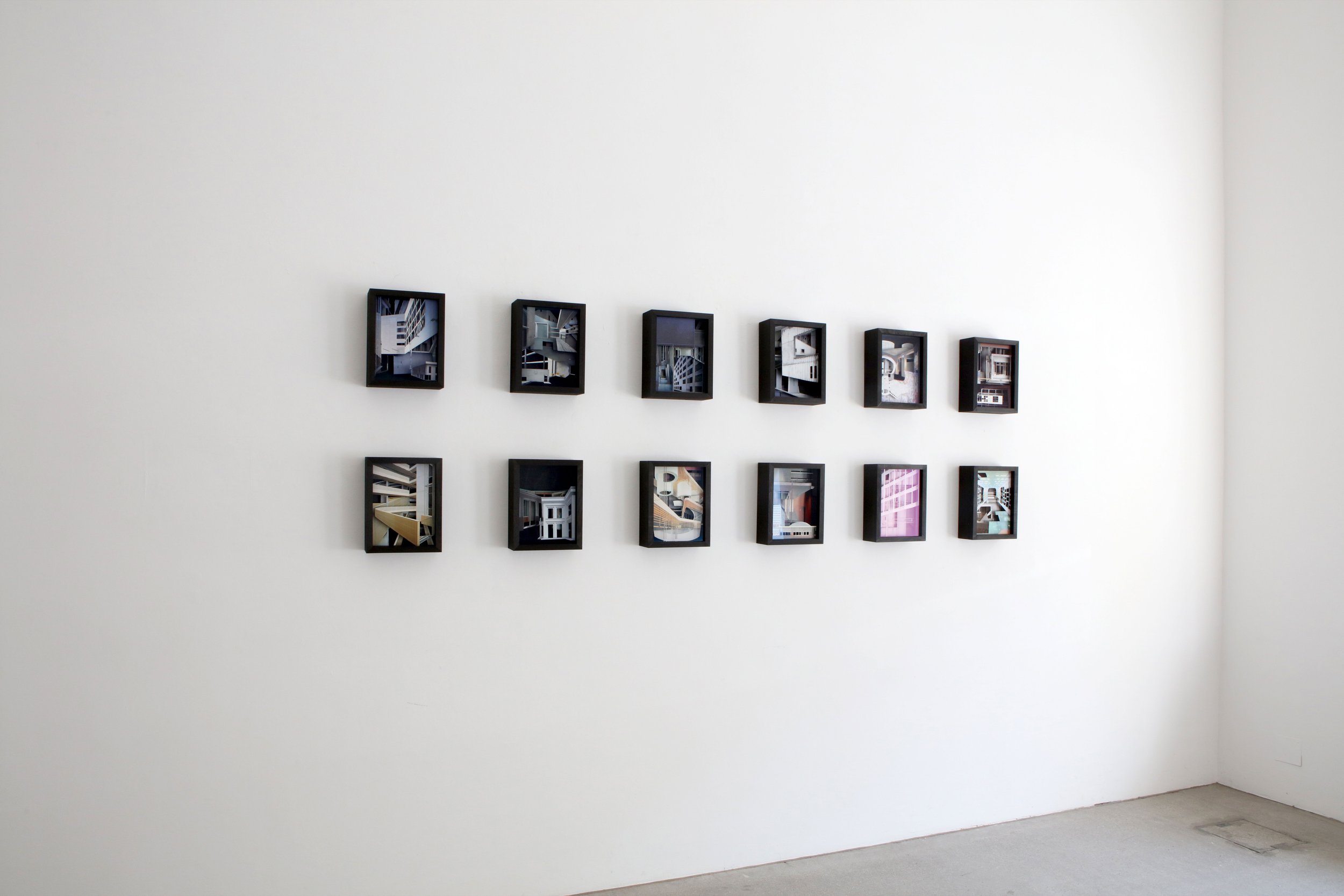KOLLAPS
24.05.2018 - 06.07.2018, Galerie Raum mit Licht, Wien / Austria
Claudia Larcher’s exhibition Kollaps never illustrates a dramatic ruin; instead, it quietly dissects modernism to expose the fragility beneath its polished surfaces. In the video Collapsing Mies (2018) and the related Mies series (2017), photographs of Mies van der Rohe’s interiors and façades are cut apart, then re-animated into slow-turning, interpenetrating fragments. These collage-loops erase the normal front/back, inside/outside distinctions and pull viewers into spatial puzzles that obey neither gravity nor linear perspective.
The same play with two- and three-dimensionality drives the textile works Collapse (2018). Here, layered prints of stairwells, curtain-wall grids, and other modernist details ripple across fabric, so rigid architecture suddenly behaves like elastic skin. Found press photos are stripped of people and time-markers, suspending the buildings in a history-less “chronotope” that echoes Larcher’s long-running project Baumeister (since 2012).
For that series she excises every non-architectural element from a year’s worth of the journal Baumeister, stacking the skeletal pages into deep, theatrical boxes that reveal changing stylistic fashions without ever fixing a single viewpoint.
Book-based works such as The New Indonesian House (2017) keep the codex form intact, turning the act of page-turning into a tactile, film-like journey, while Panorama Lampshade (2018) grafts 19th-century visual media onto design objects to invite full-bodied, domestic encounters with architecture. Across these media, Larcher stages dream-like heterotopias where multiple images, spaces, and eras coexist. Rather than mourning specific wrecks, she signals the wider collapse of modernist certainties and—in the spirit of Piranesi’s impossible prisons or Einstürzende Neubauten’s sonic rubble—opens space for new, plural ways of imagining how we inhabit and perceive the built world.












